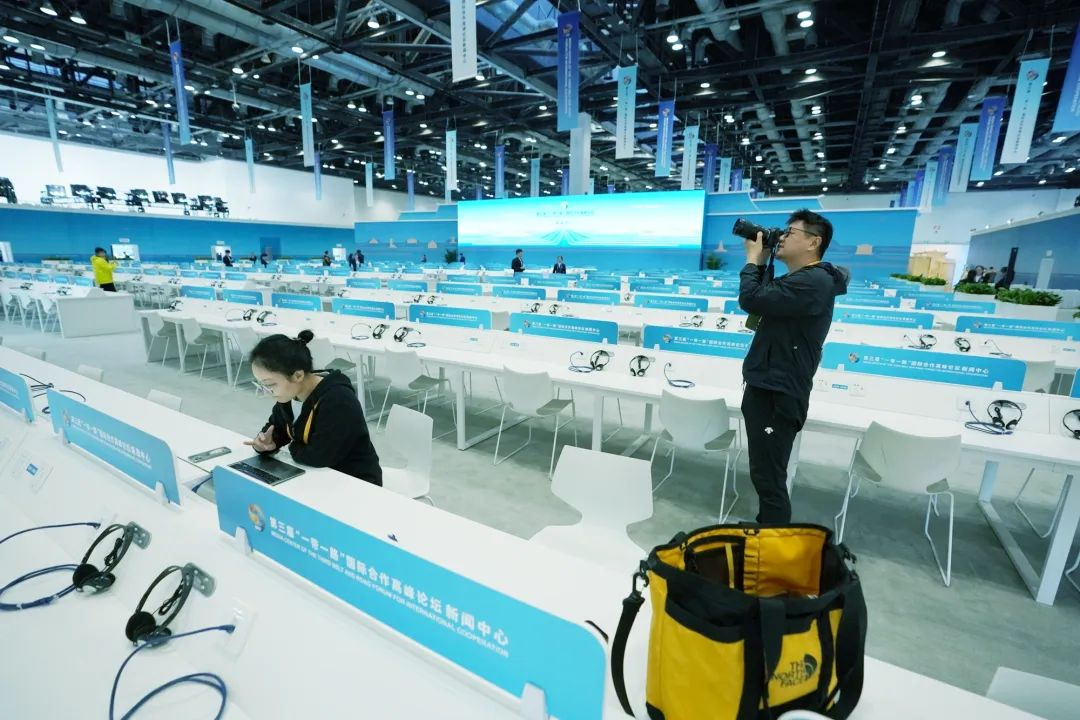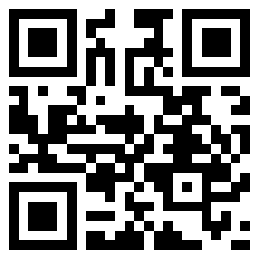The Third Belt and Road Forum for International Cooperation (BRF) is scheduled to take place in Beijing from October 17 to 18. Today marks the trial operation of the BRF media center, located at the E1 and E2 exhibition halls and the lobby of the China National Convention Center (CNCC). It aims not only to meet the working needs of journalists, especially their needs for converged media coverage, but also to showcase various features such as technology and cultural interactive exhibitions themed on achievements made over the past decade in the Belt and Road initiative. These exhibitions act as a platform for promoting cultural exchanges among participating countries.

Journalists experience services in the media center
High-speed network accessible for all functional areas
The media center, with a floor area of about 11,000 square meters, comprises eight functional areas: a comprehensive service area, a public workspace, a dedicated workspace, a news release area, a radio and television technical service area, a technology and cultural interactive exhibition area, a catering and tea break area, and an operational support area. In addition, it is equipped with a public address broadcasting system, top-notch office facilities, and high-speed internet, providing services to media representatives from various countries, including broadcasting, public signals, interviews, news updates, transportation, and catering.
The media center can support up to 10 channels of high-definition public signals, and also offers up-streaming services, facilitating network delivery with multiple bitrates and encoding schemes. Moreover, it provides transcoding services for source material files, enabling converged media coverage across multiple channels and formats. In terms of network communication, the media center boasts GbE desktops, GbE WiFi access, and GbE 5G video transmission. By establishing primary and secondary connections, high-speed internet access and the reporting needs of journalists can be efficiently and securely met.
Interior design featuring the Silk Road
The interior design of the media center is skillfully crafted, with blue as the dominant hue, which is also BRF’s key visual. The design seamlessly blends ink-wash paintings, silk, porcelain, and traditional Chinese architectural cornices. In the public workspace, two open “painting books” stand on both sides, depicting the Silk Road Economic Belt and the 21st Century Maritime Silk Road, respectively. These artworks showcase the landmarks and collaborative achievements of the participating countries. By scanning the QR code, viewers can use augmented reality (AR) technology and overlay scenes of the ancient Silk Road onto the paintings.
On each side of the large screen in the public workspace, there are silhouettes of iconic buildings from the Belt and Road participating countries. These are combined with the dynamic key visual on the screen, featuring hills, peaks, water patterns, sea waves, camels, and ten light bands. This design embodies the Silk Road Spirit, which emphasizes peace and cooperation, openness and inclusiveness, mutual learning and mutual benefit. It also reflects the cooperative concept of connectivity in five areas, namely policy coordination, facilities connectivity, unimpeded trade, financial integration, and people-to-people bond, as well as the goal of building the BRI into a road to peace, prosperity, opening-up, innovation and connecting different civilizations that is advocated by the participating countries. As we move towards the catering and tea break area, we can see the exquisite Silk Road Landscape Map and the original painting Beijing in Ink, complemented by porcelain and miniature paintings. The catering and tea break area is adorned with silky gauze curtains, offering international journalists an opportunity to delve into the profound history and culture of our country during their leisure time.
Technologies highlight the charm of Beijing
At the media center, journalists from around the world can immerse themselves in the charm of Beijing, the capital city. The technology and cultural interaction area showcases Beijing's achievements in enhancing its role as the “four centers” and the “three cultural belts” (the Grand Canal, the Great Wall, and the Western Hill-Yongding River Cultural Belts) through 8K, 360° VR shooting, and AI. The 8K experience area boasts an 18-meter-wide, semi-surround, and tri-fold 8K UHD screen with a small pixel pitch and high resolution. Through 3D modeling and simulation, iconic landmarks such as Beijing’s central axis, Beijing Municipal Administrative Center (BMC), Olympic venues, and Zhongguancun Science Park come to life. In the 360° VR shooting experience area, journalists can interact with the lens against the surrounding green screen. HD images captured on-site will seamlessly blend in real-time with scenes of the Randeng Pagoda, Mutianyu Great Wall, and Summer Palace. This allows journalists to appreciate the allure of the three cultural belts.
A photo exhibition themed "An Extraordinary Decade of Beijing in the New Era", is on display in Zone E of the CNCC. It features 18 photos that represent the landscape, architecture, and culture of Beijing, showcasing the brand-new appearance of this ancient city in the new era.
There are also interactive activities available with inheritors of intangible cultural heritage, including cloisonné, woodblock printing, Peking Opera makeup painted sculpture, imitation porcelain, Beijing-style cheongsam, and Tong Ren Tang traditional Chinese medicine techniques. Journalists are able to have hands-on experiences and appreciate the charm of traditional Chinese culture.
The media center will be operational from October 16 to 18.


